Literature in the 21st century comprises literary works that have been published from the year 2001 onwards.
This period is characterized by rich diversity, addressing gender issues, integrating technology into storytelling, reflecting the diverse cultural landscape, and challenging traditional literary conventions.
21st-century literature is not just about the themes and issues of our times. It's also about the fascinating role of technology in storytelling. It reflects a technological culture, breaks traditional writing rules, and allows us to freely write, express, and convey our experiences through technology, sparking a new era of literary exploration.
A List of Fiction Books of The 21st Century
1. "The Road" by Cormac McCarthy (2006)

There is nothing green or growing in McCarthy’s masterpiece of dystopian fiction, the story of an unnamed man and his young son migrating over a newly post-apocalyptic earth where the only remaining life forms are desperate humans who have mostly descended into marauding cannibalism.
Yet McCarthy renders his death scape in curious, riveting detail, punctuated by flashes of a lost world from the man’s memory that become colorful myths for his son.
Ultimately, “The Road” is a tribute to parental love: A father nurtures and protects his child with ingenuity and tenderness. This triumph feels redemptive even in a world without hope. — Jennifer Egan, author of “A Visit From the Goon Squad”
2. "Atonement" by Ian McEwan (2001)

Each of us is more than the worst thing we’ve ever done, or so the saying goes. But what a naïve, peevish 13-year-old named Briony Tallis sets in motion when she sees her older sister flirting with the son of a servant in hopelessly stratified pre-war England surpasses disastrous; it’s catastrophic.
It’s also a testament to the piercing elegance of McEwan’s prose that “Atonement” makes us care so much.
3. "Shantaram" by Gregory David Roberts (2003)

Gregory David Roberts wrote Shantaram in 2003. The story follows a convicted Australian bank robber and heroin addict who escapes from Pentridge Prison and flees to India. The novel is praised for vividly portraying life in Bombay from the early to late 1980s.
The novel is said to be influenced by actual events in the author's life, although some of Roberts's claims are disputed by others involved in the story.
4. "The Brief Wondrous Life of Oscar Wao" by Junot Díaz (2007)

Díaz’s first novel landed like a meteorite in 2007, dazzling critics and prize juries with its mix of Dominican history, coming-of-age tale, comic-book tropes, Tolkien geekery, and Spanglish slang.
The central plotline follows the nerdy, overweight Oscar de León through childhood, college, and a stint in the Dominican Republic, where he falls disastrously in love. Sharply rendered set pieces abound, but the real draw is the author’s voice: brainy yet inviting, mordantly funny, sui generis.
5. "Never Let Me Go" by Kazuo Ishiguro (2005)

Kathy, Ruth, and Tommy are students at an esteemed English school named Hailsham. Under the supervision of a group of "guardians," the friends share music and rumors while navigating the shifting loyalties and heartbreaks of growing up. The story is familiar and sometimes even funny, but it turns sinister and ultimately becomes tragic.
Like much of the best dystopian fiction, "Never Let Me Go" 's power to move and disturb comes from the persistence of human warmth in a cold universe and its ability to make us see ourselves through its uncanny mirror.
Is Ishiguro commenting on biotechnology, reproductive science, or the cognitive dissonance necessary for life under late-stage capitalism? He would never be so didactic as to tell you. What lies at the heart of this beautiful book is not social satire but deep compassion.
6. "The Underground Railroad" by Colson Whitehead (2016)

“The Underground Railroad” is a profound revelation of the intricate aspects of slavery and the nebulous shapes of freedom. It features an indomitable female protagonist, Cora, from Georgia.
The novel seamlessly combines history, horror, and fantasy with philosophical speculation and cultural criticism to tell a compulsively readable, terror-laden narrative of a girl with a fierce inner spark who follows the mysterious path of her mother, Mabel, the only person ever known to have escaped from the Randall plantations.
7. "Gilead" by Marilynne Robinson (2004)

The book Gilead is the first in four series, followed by Home, Lila, and Jack. It takes its name from the fictional town in Iowa where the Boughton and Ames families live and from a reference in the Book of Jeremiah.
The story is narrated by John Ames, an elderly Congregationalist minister who recently became a husband and father, finding fulfillment in his vocation and family.
The book celebrates the quiet decency of small-town life in the 1950s and mainline Protestantism while also critiquing the moral fervor and religious vision of the abolitionist movement that turned into complacency a century later.
8. "The Night Circus" by Erin Morgenstern (2011)

The Night Circus is a magical fairy tale set near a fictional Victorian London. It tells the story of Le Cirque des Rêves (The Circus of Dreams), which only opens from sunset to sunrise. The circus features illusionists, fortune-tellers, and attractions that defy the laws of physics. It appears and disappears in random cities and towns without warning.
The circus is powered by real magic, and performers frequently perform impossible feats. It also serves as a training ground for two powerful magicians' proteges.
Prospero the Enchanter and Mr. A. H. agree to each raise and train a young magician who will eventually face off against the other in a battle of wills and magic. Neither protege is allowed to learn the identity of their competitor, and this secretive conflict by proxy is referred to as the "game."
Prospero forces his daughter, Celia Bowen, to perfect her illusionary skills through rigorous and often cruel training. At the same time, Mr. A. H. trains his orphan ward, Marco Alisdair, to create fantastical scenes that exist only in the mind of his magic target.
9. "Normal People" by Sally Rooney (2018)

The novel follows the complex friendship and relationship between Connell and Marianne, two teenagers from different social classes. They attend the same secondary school in County Sligo, Ireland, and, later, Trinity College Dublin (TCD). It is set during the post-2008 Irish economic downturn from 2011 through 2015.
Connell is a popular, handsome, and brilliant secondary school student from a poor home who begins a very intimate erotic relationship with the unpopular, intimidating, equally intelligent, and wealthy Marianne, whose mother employs Connell's mother as a house cleaner.
Connell is very insecure and shy about the relationship, so he keeps the affair a secret from his school friends. However, after the summer, he attends Trinity with Marianne and reconciles with her.
Well-off Marianne blossoms at university, becoming pretty and popular, while Connell struggles to fit in properly with his peers for the first time in his life. The two weave in and out of each other's lives during their university years, developing an intense bond that exposes their traumas and insecurities.
10. "The Goldfinch" by Donna Tartt (2013)

Donna Tartt's debut novel, The Secret History, was highly acclaimed in 1992. Her 2002 follow-up, The Little Friend, received a cool reception. More than a decade later, she published The Goldfinch, a coming-of-age novel with a rich and captivating narrative.
The story revolves around 13-year-old Theo Decker, who survives a museum bombing that kills his mother. He takes a small, priceless souvenir from the rubble, which becomes both a charm and a burden in this intense and haunting novel.
11. "Life After Life" by Kate Atkinson (2013)

Can we get life “right”? Are there choices that finally lead to justice, happiness, or pain-free? Atkinson wrestles with these questions in her brilliant “Life After Life” — a historical novel, a speculative novel, a tale of time travel, and a moving portrait of life before, during, and after the war.
It gobbles up genres and blends them until they become a seamless work of art. I love this goddamn book. — Victor LaValle, author of “Lone Women”
12. "Homegoing" by Yaa Gyasi (2016)

The novel covers many important historical events, including the introduction of cacao farming in Ghana, the Anglo-Asante wars in Ghana, slavery, segregation, the convict leasing system, the Great Migration, and the Jazz Age in Harlem, America. The novel is described as "a novel in short stories" because it spans several hundred years of history and features fourteen characters, with each chapter standing on its own.
In addition to exploring these historical events, the novel delves into various literary themes and motifs, such as the 'upstairs, downstairs' trope. This is shown through Effia living above her half-sister Esi, unaware of the atrocities happening in the basement of the Cape Coast castle. The themes of generational trauma and guilt follow these two lineages as Esi's descendants grapple with the impact of slavery and structural racism in the US. In contrast, Effia's descendants struggle with the limited knowledge of their family's role in the Transatlantic Slave Trade.
13. "Cloud Atlas" by David Mitchell (2004)

Mitchell's novel is incredibly ambitious. It is a conglomeration of ideas, styles, and diverse settings, all linked by the central theme of reincarnation.
The book comprises six interwoven narratives spanning different periods and locations, creating a complex and intricate puzzle that blends pulp fiction, philosophy, and humanism elements.
14. "The Lovely Bones" by Alice Sebold (2002)
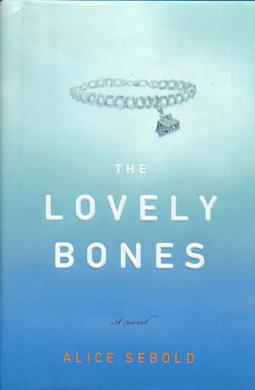
This is the story of Susie Salmon, who is adapting to her new home in heaven. It's not what she expected, as she watches life on earth go on without her. Her friends are spreading rumors about her disappearance, her killer is trying to cover his tracks, and her grief-stricken family is falling apart.
Despite the unspeakable tragedy and loss, The Lovely Bones tells a story filled with hope, humor, suspense, and joy.
15. "The Nickel Boys" by Colson Whitehead (2019)

The narrative alternates between the 2010s and the 1960s. In the present, Elwood Curtis, now a New York business owner, is forced to confront his past as an investigation into the Nickel Academy, a juvenile reformatory, uncovers its hidden abuses and secret burials.
In the 1960s, Elwood was a promising Black student in Tallahassee, inspired by Martin Luther King Jr., but after hitchhiking in a stolen car, he was unjustly sent to Nickel Academy. At the segregated school, he befriends Turner, who is more cynical. Elwood tries to survive but becomes a target after reporting the academy’s abuses. Turner overhears plans to have Elwood killed, and the two try to escape. Elwood is shot dead, while Turner escapes and assumes Elwood’s identity.
In the 2010s, as the investigation continues, "Elwood" reveals his actual name—Jack Turner—and gives testimony about his friend’s death.
16. "The Luminaries" by Eleanor Catton (2013)
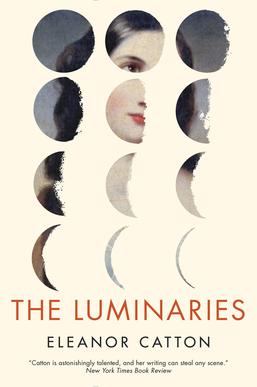
The novel follows Walter Moody, a prospector who travels to the West Coast settlement of Hokitika to make his fortune on the goldfields. Instead, he stumbles into a tense meeting between twelve local men and is drawn into a complex mystery involving a series of unsolved crimes.
The novel's structure is based on Western astrology, with each of the twelve local men representing one of the twelve zodiac signs and another set of characters representing planets in the solar system.
17. "American Dirt" by Jeanine Cummins (2020)
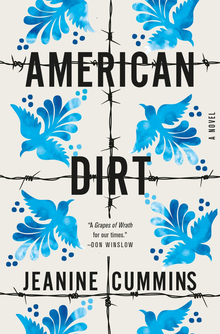
The book is about a Mexican bookseller who is forced to flee as an illegal immigrant to the United States, along with her son, after her journalist husband exposes a local drug kingpin. "American Dirt" was a New York Times bestseller, selling over 3 million copies worldwide in 37 languages.
It was selected for the TV series "Oprah's Book Club" hosted by Oprah Winfrey and was on the longlist for the 2020 Prix Médicis étranger. However, the book also gained significant criticism, especially from Mexican-American authors, for its alleged cultural exploitation.
18. "Lincoln in the Bardo" by George Saunders (2017)

A father mourns his young son, who died of typhoid, while a president mourns his country torn apart by civil war. In Saunders’s unforgettable portrait, set in a graveyard filled with talkative spirits, these images collide and merge, turning Lincoln’s sorrow — his 11-year-old boy, Willie, died in the White House in 1862 — into a nation's grief, a chorus of voices and stories.
This is the only novel by a writer admired for his satirical short stories. The book doesn't mark a change of direction as much as it highlights what has always set his work apart — a compassionate spirit and a keen ear for human suffering.
19. "A Little Life" by Hanya Yanagihara (2015)
"A Little Life" is told chronologically with frequent flashbacks—the novel's perspective shifts throughout the story. In the beginning, it uses a third-person omniscient perspective, focusing on the thoughts of Jude, Willem, JB, and Malcolm.
As the story progresses, it increasingly centers on Jude, with each character's interactions with Jude and his experiences shaping the perspective. The narrative includes first-person narratives from an older Harold nine years later.
20. "All the Light We Cannot See" by Anthony Doerr (2014)

The novel is set during World War II and follows Marie-Laure LeBlanc, a blind French girl, and Werner Pfennig, a German boy with skills in radio technology. The story alternates between their perspectives with a nonlinear structure.
Critics have praised the novel's lyrical writing style and extensive sensory details. The novel explores ethical themes and portrays the destructive nature of war. Anthony Doerr drew inspiration from a 2004 train ride and spent ten years researching and writing the book.
A List of Sci-Fi / Fantasy Books of The 21st Century
1."The Fifth Season" by

“The Fifth Season” weaves its story in a polyphonic voice, utilizing a clever story structure to move deftly through generational time. Jemisin delivers this bit of high craft in a fresh, unstuffy voice — something rare in high fantasy, which can take its Tolkien roots too seriously.
From its heartbreaking opening (a mother’s murdered child) to its shattering conclusion, Jemisin shows the power of what good fantasy fiction can do. “The Fifth Season” explores loss, grief, and personhood intimately.
But it also takes on themes of discrimination, human breeding, and ecological collapse with an unflinching eye and a particular nuance. Jemisin weaves a world both horrifyingly familiar and unsettlingly alien. — Rebecca Roanhorse, author of “Mirrored Heavens.”
2. "The Hunger Games" by Suzanne Collins (2008)

The story is told from the perspective of 16-year-old Katniss Everdeen, who lives in the future post-apocalyptic nation of Panem, located in North America. The Capitol, a highly advanced metropolis, holds political control over the rest of the nation. Every year, the Hunger Games takes place, where one boy and one girl aged 12–18 from each of the twelve districts surrounding the Capitol are selected by lottery to participate in a televised battle royale to the death.
The book received critical acclaim from major reviewers and authors. It was praised for its plot and character development. In The Hunger Games, Collins drew upon Greek mythology, Roman gladiatorial games, and contemporary reality television for thematic content. The novel won many awards, including the California Young Reader Medal, and was named one of Publishers Weekly's "Best Books of the Year" in 2008.
3. "The Three-Body Problem" by Liu Cixin (2008)

The first novel in the "Remembrance of Earth's Past" trilogy depicts a fictional past, present, and future where Earth encounters an alien civilization from a nearby system of three Sun-like stars orbiting one another, which is an example of the three-body problem in orbital mechanics.
Initially serialized in Science Fiction World in 2006, the story was later published as a standalone book in 2008. In 2006, it received the Galaxy Award for Chinese science fiction. By 2012, it was recognized as one of China's most successful full-length novels of the past two decades.
The English translation by Ken Liu was published by Tor Books in 2014. This translation was the first novel by an Asian writer to win a Hugo Award for Best Novel and was nominated for the Nebula Award for Best Novel.
4. "Children of Time" by Adrian Tchaikovsky (2015)
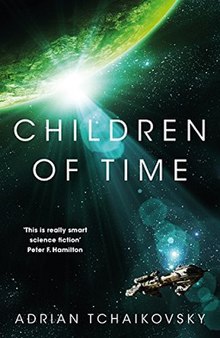
In the distant future, Dr. Avrana Kern leads a scientific team orbiting a previously uninhabitable exoplanet they hope to name "Kern's World." They plan to release a nano-virus to accelerate the evolution of monkeys. Meanwhile, on Earth, conflict arises between authorities and anti-technology factions.
Dr. Kern discovers an agent of an anti-technology group aboard the ship attempting to sabotage it. She escapes in an escape pod, and the monkeys' payload burns up during atmospheric entry, leaving the nano-virus to infect and alter various creatures, including jumping spiders referred to as Portiids.
Stranded in orbit, Dr. Avrana Kern wakes periodically to find no radio signals from Earth. Millennia passes, and the last remnants of humanity head to Kern's World aboard the starship Gilgamesh, unaware of the uplifted Portiid spiders.
The novel contrasts the rapid advancement of the spiders' societies with the descent of the last humans into strife and barbarism, primarily seen through the eyes of Gilgamesh's chief classicist, Holsten Mason.
After the two narratives collide, the Portiids devise a strategy that saves both their world and the invaders. They invite the last humans to live with them on Kern's World, based on past genetic memories known as "Understandings" that showed collaboration as the better option.
5. "The Name of the Wind" by Patrick Rothfuss (2007)

Told in Kvothe's voice, this is the tale of the magically gifted young man who grows to be the most notorious wizard his world has ever seen.
The intimate narrative of his childhood in a troupe of traveling players, his years spent as a near-feral orphan in a crime-ridden city, his daringly brazen yet successful bid to enter a legendary school of magic, and his life as a fugitive after the murder of a king form a gripping coming-of-age story unrivaled in recent literature.
A high-action story written with a poet's hand, The Name of the Wind is a masterpiece that will transport readers into the body and mind of a wizard.
6. "Anathem" by Neal Stephenson (2008)

Fraa Erasmas is a young scholar living in Saunt Edhar, a concentration of mathematicians, scientists, and philosophers protected from the outside world by ancient stones, traditions, and rituals.
Throughout history, the community has faced violence and devastation, but they have always adapted and become more self-reliant. As the once-in-a-decade rite of Apert approaches, the scholars prepare to open the gates and welcome outsiders. During this time, Erasmus looks forward to reconnecting with his past, but unexpected forces threaten the peace.
Erasmus and his colleagues are called upon to prevent global disaster, and he finds himself on a journey that will take him to the most dangerous places on the planet and beyond.
7. "The City We Became" by N.K. Jemisin (2020)
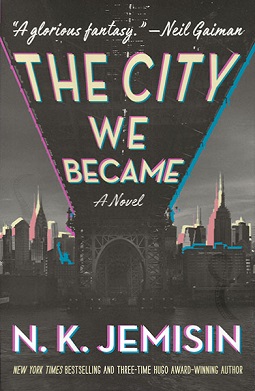
"The City We Became" is set in New York City, where major cities become sentient through human avatars. After the avatar of New York falls into a supernatural coma, five new avatars representing the five boroughs come together to fight their common enemy.
The story follows their battles, encounters, and eventual victory over the Woman in White holding Veneza hostage. The avatars celebrate their triumph on the Coney Island boardwalk, and the avatar of New York City joins the celebrating avatars of the boroughs.
8. "The Martian" by Andy Weir (2011)

Increasingly, and for obvious reasons, end-times novels are not hard to find. But few have conjured the strange luck of surviving an apocalypse — civilization preserved via the ad hoc Shakespeare of a traveling theater troupe, entire human ecosystems contained in an abandoned airport — with as much spooky melancholic beauty as Mandel does in her beguiling fourth novel.
9. "Station Eleven" by Emily St. John Mandel (2014)

In 2035, NASA's Ares 3 mission crew arrived at Acidalia Planitia for a planned month-long stay on Mars. After only six sols, an intense dust and wind storm threatened to topple their Mars Ascent Vehicle (MAV), trapping them on the planet.
During the hurried evacuation, an antenna tears loose and impales astronaut Mark Watney, a botanist and engineer, also turning off his spacesuit radio. He is flung out of sight by the wind and presumed dead. As the MAV teeters dangerously, mission commander Melissa Lewis has no choice but to take off without completing the search for Watney.
However, Watney is not dead. His injury proves relatively minor, but he cannot communicate with anyone with no long-range radio. He must rely on his resourcefulness to survive. He begins a log of his experiences. His philosophy is to "work the problem," solving each challenge as it confronts him.
With food a critical, though not immediate, problem, he begins growing potatoes in the crew's Martian habitat (the Hab). He uses an iridium catalyst to separate hydrogen gas from surplus hydrazine fuel, which he then burns to generate water for the plants.
10. "Oryx and Crake" by Margaret Atwood (2003)
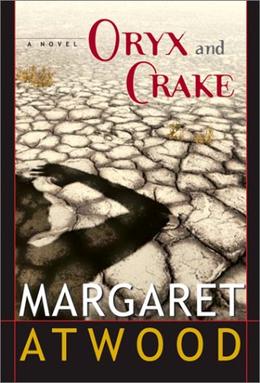
Oryx and Crake is a novel by Canadian author Margaret Atwood, published in 2003. Atwood describes the novel as speculative fiction and adventure romance rather than pure science fiction because it does not deal with things "we can't yet do or begin to do," yet it goes beyond the amount of realism she associates with the novel form.
The story focuses on a character named Snowman, who finds himself in a bleak situation with only creatures called Crakers to keep him company. The reader learns about his past as a boy named Jimmy and of genetic experimentation and pharmaceutical engineering that occurred under the purview of Jimmy's peer, Glenn "Crake."
The book was first published by McClelland and Stewart and was shortlisted for the 2003 Man Booker Prize for Fiction and the 2004 Orange Prize for Fiction. Oryx and Crake is the first MaddAddam trilogy, followed by The Year of the Flood (2009) and MaddAddam (2013).
In 2023, the Hessisches Staatstheater Wiesbaden premiered an opera based on the novel, composed by Søren Nils Eichberg, conducted by Albert Horne, and directed by Daniela Kerck.
A List of Biography Books of The 21st Century
1. "Steve Jobs" by Walter Isaacson (2011)
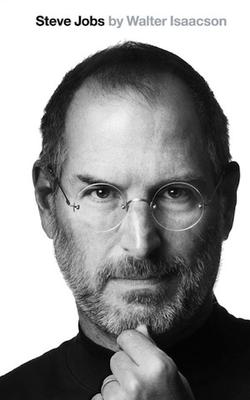
Walter Isaacson's book Steve Jobs was based on more than 40 interviews with Jobs conducted over two years, as well as interviews with over 100 family members, friends, adversaries, competitors, and colleagues. Isaacson was given "unprecedented" access to Jobs's life. Jobs encouraged the people interviewed to speak honestly.
Although Jobs cooperated with the book, he asked for no control over its content besides its cover and waived the right to read it before publication. Isaacson commented that he had striven to take a balanced view of his subject that did not sugarcoat Jobs's flaws. The book was released on October 24, 2011, by Simon & Schuster in the United States, 19 days after Jobs's death.
2. "Becoming" by Michelle Obama (2018)
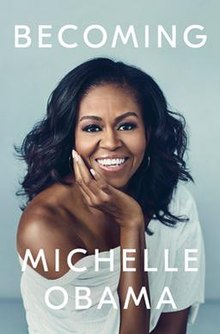
"Becoming" is a book by Michelle Obama, the former First Lady of the United States. It talks about her life, including her time in the White House, her work on public health, and her role as a mother. The book was published on November 13, 2018, and is available in 24 languages.
One million copies were donated to First Book, an organization that gives books to children. It was the highest-selling book in the United States in 2018, with over two million copies sold just 15 days after its release.
3. "Educated" by Tara Westover (2018)
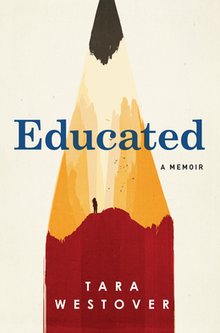
Tara Westover's memoir discusses her journey from growing up in a survivalist Mormon family in the mountains of Idaho to earning a PhD in history from Cambridge University.
She highlights the importance of education in broadening her perspective and details her struggle to balance her thirst for knowledge with her family's way of life. The book has been a bestseller for 132 consecutive weeks and has received several awards and nominations, including the 2019 Alex Award.
4. "The Glass Castle" by Jeannette Walls (2005)

The Glass Castle is a memoir by Walls that tells the story of her tumultuous and unconventional upbringing. Despite her challenges, Walls highlights her resilience and her father's efforts to make amends. The book received widespread acclaim for its balanced portrayal of the positives and negatives of her childhood.
It has been included in school curricula in North America but has also faced controversy and challenges due to its language and explicit content. The memoir spent over 260 weeks on The New York Times Best Seller list and received numerous awards, including the Christopher Award, the American Library Association's Alex Award, and the Books for Better Living Award.
5. "Born a Crime" by Trevor Noah (2016)

The book "Born a Crime" details Trevor Noah's experiences growing up in South Africa during apartheid. Noah, born to an illegal interracial couple, was raised by his fiercely religious mother. The book depicts his resilience, independence, and the influence of his abusive stepfather. It ends with the story of his mother being shot by his stepfather and her miraculous survival.
6. "When Breath Becomes Air" by Paul Kalanithi (2016)

"When Breath Becomes Air" is an autobiographical book by neurosurgeon Paul Kalanithi, chronicling his battle with stage IV metastatic lung cancer. As he nears the end of his neurosurgical residency at Stanford University, he experiences concerning health issues, initially attributed to aging and work stress. However, after symptoms worsen, he is diagnosed with cancer. The book details his struggle with the disease and its impact on his life and relationships.
7. "The Immortal Life of Henrietta Lacks" by Rebecca Skloot (2010)
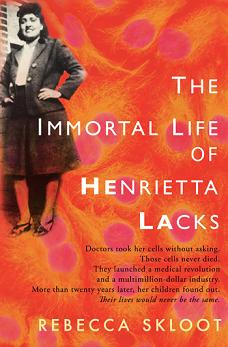
The book is about Henrietta Lacks and the immortal cell line known as HeLa, which originated from Lacks's cervical cancer cells in 1951. Skloot became interested in Lacks after a biology teacher mentioned her but knew little about her.
Skloot began researching her extensively and worked with the Lacks family to create the book. The book is notable for its scientific writing and for dealing with ethical issues of race and class in medical research.
Skloot said that some of the information was taken from Deborah Lacks, Henrietta Lacks's daughter's journal, archival photos and documents, and scientific and historical research. It is Skloot's first book.
8. "Just Mercy" by Bryan Stevenson (2014)

"Just Mercy" is a 2019 American biographical legal drama film directed by Destin Daniel Cretton. It stars Michael B. Jordan as Bryan Stevenson, Jamie Foxx as Walter McMillian, Rob Morgan, Tim Blake Nelson, Rafe Spall, and Brie Larson.
The movie explores the work of defense attorney Bryan Stevenson as he represents poor people on death row in the South. It focuses on his work with Walter McMillian, who had been wrongfully convicted of the murder of a young woman. The film is based on Stevenson's 2014 memoir, in which he details his journey to making the defense of African American prisoners his life's work.
"Just Mercy" premiered at the Toronto International Film Festival on September 6, 2019, and was theatrically released by Warner Bros. Pictures on December 25, 2019. It received positive reviews from critics and grossed $50.4 million.
Jamie Foxx was nominated for Outstanding Performance by a Male Actor in a Supporting Role at the 26th Screen Actors Guild Awards. Jamie Foxx and Michael B. Jordan won the NAACP Image Awards for their respective roles.
9. "Unbroken" by Laura Hillenbrand (2010)

"Unbroken" is a biography of World War II veteran Louis Zamperini. He was a former Olympic track star who survived a plane crash in the Pacific Theater, spent 47 days drifting on a raft, and then survived more than two and a half years as a prisoner of war (POW) in three Japanese POW camps.
"Unbroken" spent over four years on The New York Times bestseller list, including 14 weeks at number one. It is the 5th longest-running nonfiction bestseller of all time.
A List of History / Non-fiction Books of The 21st Century
1. "Sapiens: A Brief History of Humankind" by Yuval Noah Harari (2011)

Harari's work provides a framework for human history, from the Stone Age to the 21st century. He argues that Sapiens dominate the world due to their unique capacity for flexible cooperation and belief in imagined realities. He discusses the impact of the Cognitive, Agricultural, and Scientific Revolutions on human society.
Harari claims that the trend for Sapiens has been towards political and economic interdependence. He also discusses the potential impact of modern technology on the future of the species. Harari cites Jared Diamond's "Guns, Germs, and Steel" (1997) as a major inspiration for the book.
2. "The Sixth Extinction" by Elizabeth Kolbert (2014)

The book argues that the Earth is in the midst of a modern, man-made, sixth extinction. In the book, Kolbert chronicles previous mass extinction events, and compares them to the accelerated, widespread extinctions during our present time.
She also describes specific species extinguished by humans, as well as the ecologies surrounding prehistoric and near-present extinction events. The author received the Pulitzer Prize for General Non-Fiction for the book in 2015.
The target audience is the general reader, and scientific descriptions are rendered in understandable prose. The writing blends explanations of her treks to remote areas with interviews of scientists, researchers, and guides, without advocating a position, in pursuit of objectivity. Hence, the sixth mass extinction theme is applied to flora and fauna existing in diverse habitats, such as the Panamanian rainforest, the Great Barrier Reef, the Andes, Bikini Atoll, city zoos, and the author's own backyard.
The book also applies this theme to a number of other habitats and organisms throughout the world. After researching the current mainstream view of the relevant peer-reviewed science, Kolbert estimates flora and fauna loss by the end of the 21st century to be between 20 and 50 percent "of all living species on earth"
3. "Guns, Germs, and Steel" by Jared Diamond (1997, but still influential in the 21st century)

The book attempts to explain why Eurasian and North African civilizations have survived and conquered others, while arguing against the idea that Eurasian hegemony is due to any form of Eurasian intellectual, moral, or inherent genetic superiority. Diamond argues that the gaps in power and technology between human societies originate primarily in environmental differences, which are amplified by various positive feedback loops.
When cultural or genetic differences have favored Eurasians (for example, written language or the development among Eurasians of resistance to endemic diseases), he asserts that these advantages occurred because of the influence of geography on societies and cultures (for example, by facilitating commerce and trade between different cultures) and were not inherent in the Eurasian genomes.
In 1998, it won the Pulitzer Prize for general nonfiction and the Aventis Prize for Best Science Book. A documentary based on the book, and produced by the National Geographic Society, was broadcast on PBS in July 2005.
4. "The Splendid and the Vile" by Erik Larson (2020)

The #1 New York Times bestselling author, Erik Larson, delivers a compelling portrait of Winston Churchill and London during the Blitz. Larson shows how Churchill taught the British people "the art of being fearless" and provides a new lens on London's darkest year through the day-to-day experience of Churchill and his family, as well as his close advisers. The book takes readers back to a time of true leadership when Churchill's eloquence, courage, and perseverance bound a country and a family together.
5. "Caste: The Origins of Our Discontents" by Isabel Wilkerson (2020)

The book describes racism in the United States as an aspect of a caste system—a society-wide system of social stratification characterized by notions such as hierarchy, inclusion and exclusion, and purity.
Wilkerson does so by comparing aspects of the experience of American people of color to the caste systems of India and Nazi Germany, and she explores the impact of caste on societies shaped by them, and their people.
Caste, which followed Wilkerson's 2010 book The Warmth of Other Suns, was met with critical acclaim and commercial success. It won or was nominated for several awards, and was featured prominently on nonfiction bestsellers lists and year-end best-books lists. It received a film adaptation in 2023, Origin, written and directed by Ava DuVernay.
6. "The Warmth of Other Suns" by Isabel Wilkerson (2010)
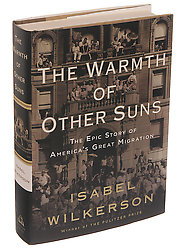
The book provides a detailed historical account of the Great Migration, a movement of approximately six million African Americans from the Southern United States to the Midwest, Northeast, and West between 1915 and 1970.
Wilkerson's work has been widely acclaimed for its comprehensive research, engaging narrative style, and significant contribution to the understanding of this crucial period in American history.
7. "Postwar" by Tony Judt (2005)

By the time this book was published in 2005, there had already been innumerable volumes covering Europe’s history since the end of World War II. Yet none of them were quite like Judt’s: commanding and capacious, yet also attentive to those stubborn details that are so resistant to abstract theories and seductive myths.
The writing, like the thinking, is clear, direct and vivid. And even as Judt was ruthless when reflecting on Europe’s past, he maintained a sense of contingency throughout, never succumbing to the comfortable certainty of despair. — Jennifer Szalai
A List of Business / Economics Books of The 21st Century
1. "The Lean Startup" by Eric Ries (2011)

The text describes Eric Ries's book on the lean startup strategy, emphasizing the application of scientific principles to entrepreneurship. Ries advocates for "just-in-time scalability" and highlights the importance of actionable metrics and pivoting when necessary.
He draws from his experiences to illustrate the importance of customer research, developing a minimum viable product (MVP), and iterating based on feedback. The book also cites companies like Alphabet Energy, Dropbox, Wealthfront, and General Electric as examples of those implementing Ries's ideas.
2. "Outliers: The Story of Success" by Malcolm Gladwell (2008)
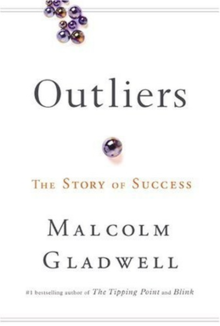
The book "Outliers" by Gladwell explores the factors that contribute to high levels of success. It looks at why most Canadian ice hockey players are born in the first few months of the year, how Bill Gates achieved extreme wealth, how the Beatles became a successful musical act, and how cultural differences affect intelligence and decision making. Gladwell mentions the "10,000-Hour Rule" throughout the book, suggesting that achieving expertise in any skill requires around 10,000 hours of practice.
"Outliers" debuted at number one on the bestseller lists for The New York Times and The Globe and Mail, holding the position on the former for eleven consecutive weeks. Critics generally liked the book, finding it more personal than Gladwell's other works.
They appreciated the connection Gladwell made between his background and the rest of the book. Reviewers also liked the questions raised by "Outliers," particularly about the potential ignored by society. However, the lessons learned were considered anticlimactic and dispiriting. The writing style was criticized for oversimplifying complex social phenomena, even though it was easy to understand.
3. "Thinking, Fast and Slow" by Daniel Kahneman (2011)
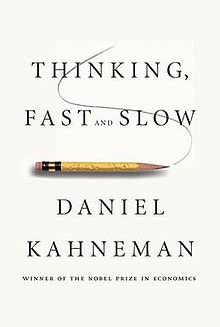
The book talks about two different ways of thinking: "System 1" is fast, instinctive, and emotional, while "System 2" is slower and more logical.
It explains the reasons behind each type of thinking and summarizes decades of research. The book covers the author's research on loss aversion and collaboration with Amos Tversky. It also discusses different phases of the author's career, including his work on cognitive biases, prospect theory, and happiness, as well as his research with the Israel Defense Forces.
The book was a bestseller and won the 2012 National Academies Communication Award for enhancing public understanding of behavioral science, engineering, and medicine. However, some studies mentioned in the book have been questioned during the psychological replication crisis.
4. "The Big Short" by Michael Lewis (2010)

"The Big Short" describes the key players in the creation of the credit default swap market who bet against the collateralized debt obligation (CDO) bubble and profited from the financial crisis of 2007–08.
The book follows individuals who believed the housing bubble was going to burst, including Meredith Whitney, Steve Eisman, Greg Lippmann, Eugene Xu, the founders of Cornwall Capital, and Michael Burry.
It also highlights some of the people involved in the biggest losses in the market crash, such as Wing Chau, Howie Hubler, and Joseph Cassano's AIG Financial Products.
How to Read Great Literary Works of The 21st Century in PDF Format
Reading Great Literary Works of the 21st Century with PDF Reader Pro allows you to explore a collection of thought-provoking books that reflect the modern world’s challenges and transformations.
These works tackle important themes like identity, social justice, technology, and human resilience, offering fresh perspectives on issues that impact us today.
PDF Reader Pro's tools make it easy to annotate, highlight, and bookmark key insights, helping you engage more deeply with the text. By reading these works, you gain not only entertainment but also a better understanding of contemporary society.
It’s a perfect way to broaden your perspective while utilizing a user-friendly digital platform.


 Free Download
Free Download  Free Download
Free Download 





 Support Chat
Support Chat